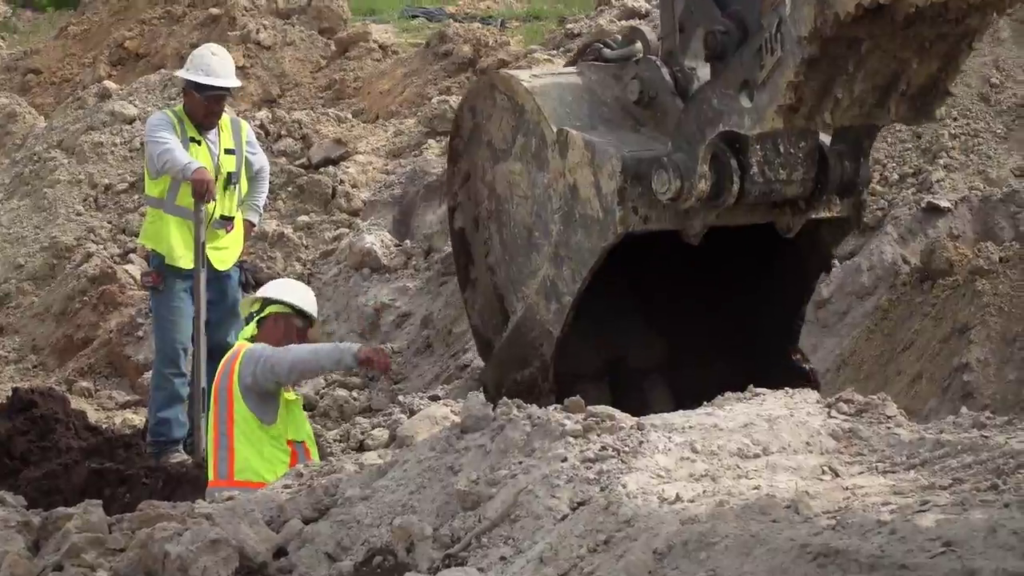
The construction industry is riddled with risks, putting workers in dangerous places if they’re not properly trained or overly cautious. While all employees are exposed to the same conditions, 35% of injuries occur during a worker’s first year on the job, regardless of their age or industry experience, according to The Travelers Umbrella.

To reduce this percentage and better protect your team, you need proper site safety training (SST). This is a training program for employees to learn about the precautionary measures and safety procedures that can mitigate risk and lower the chance of them getting injured on the job.
The most common types of hazards faced during work site operations include slips and trips, working at heights, moving objects, electricity and loud noises. Let’s look at how SST can help mitigate these problems, reducing injuries for your workforce and meeting the industry’s training requirements.
PPE Requirements: Keep Every Worker Safe
Before any work can be done, your team needs to gear up and be ready to go. This includes construction personal protective equipment, or PPE — one of the cornerstones for site safety that can help protect workers from the various hazards they may encounter.
There are 10 types of construction PPE required by OSHA:
- Head protection.
- Face and eye protection.
- Hearing protection.
- Respiratory protection.
- Hand and arm protection.
- Leg and foot protection.
- Skin protection.
- Fall protection.
- Electric shock protection.
- Visibility clothing.
PPE is a major way for your workforce to be protected. It should be worn from the minute employees arrive on site to when they leave to minimize any potential injuries and mitigate risk. The consistent use of PPE is paramount, especially for workers regularly exposed to extreme conditions or working with electrical equipment, heavy machinery or in high places. It’s an essential part of fall prevention and fire safety, giving every construction worker on your job site the necessary protection they need.

Common Hazards Related to Construction Safety
Knowledge is power when it comes to safety. By paying attention and being aware of common hazards, your team can be proactive and quickly react to problems.
Avoiding Crushing and Run-On Incidents
Material handling and driving equipment are a big part of any construction role. Equipment and materials can weigh thousands of pounds, making proper usage and storage essential to safety. Every employee must pay attention to their surroundings, always looking for moving equipment and clearly communicating to prevent accidents.
Safe Lifting and Load Placement
For heavy or awkward material, it can be difficult to properly load safely with equipment. It’s crucial to check the rigging to ensure it’s in good working condition. Then, make sure the load is balanced and able to be lifted without falling off. Lastly, keep workers clear of the lift area and always have another employee to help signal the driver and guide them in the right direction.
Mitigating Power Line Risks
Underground utilities and overhead power lines pose a large threat to your team, especially since you’re dealing with digging equipment and tall machines that can mess with electrical currents and cause injuries. To encourage electric and fire safety, always keep a safe working distance of at least 10 feet from overhead lines and more than 10 feet if the voltage is over 50,000 volts, according to OSHA.
Maintaining a Safety Mindset
Prioritize safety in your construction business by ensuring everyone on your workers gets proper SST, giving them the necessary education and training to stay out of harm’s way. This helps you maintain a safety mindset, ultimately improving protection, productivity and operational continuity.
To be vigilant and ensure your team is aware of their surroundings, encourage them to:
- Put their knowledge of construction best practices into action.
- Be constantly conscious of their surroundings, paying close attention to hazards and other employees while working.
- Stop work when encountering concerns and seek guidance from their supervisor, site safety coordinator or construction superintendent responsible for the job site.

Promote Safety With the Right SST Course for Your Needs
Take your construction safety training to the next level with Video Training Power. We offer interactive and up-to-date online training materials that provide comprehensive education for your workforce, no matter their level of expertise.
Every online course is designed for classroom-style discussions, enabling your team to take part in meaningful conversations that further learning. By using our occupational safety training course, you can build a stronger site safety plan to ensure every construction worker on your team is prepared and meets the training requirements set by the industry.
Explore our online training course materials today to make protecting your team a priority.